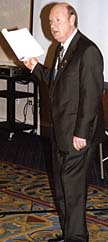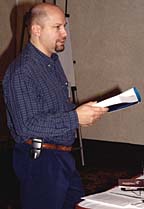
Phil Forner of Allendale Heating Co., Allendale, Mich., and John Sedine of Engineering Heating & Cooling, Walker, Mich., chaired a seminar on this very topic. It got the attendees talking.
Sedine pointed out that there are three different code books for commercial work and an additional book for residential work.
He gave the example of the International Code (IC), which is altered by Michigan officials to conform to situations within the state. He added that the annual spring IC council meeting in Nashville last year "produced about 90 proposed changes to the IC."
Sedine noted that Michigan sends out technical bulletins regarding code changes and keeps updating them throughout the year. He talked about one change, which was prompted by an inspector who didn't like climbing ladders to inspect rooftop units.
"The inspector said that non-permanent ladders were a safety hazard to inspectors," said Sedine. "Now permanent ladders need to be installed to allow access to rooftops."
Forner said that contractors should not take changes like this lightly. "If you don't have provisions for a ladder installation, you can be sued since you are the permit holder," Forner told the audience.

Recent Changes
Sedine highlighted some other changes in the state of Michigan mechanical codes.Both Sedine and Forner had some words of advice for attendees. "Take a Manual D class or read the book about duct location and sizing," said Sedine, noting that inspectors will ask if a duct project was done according to Manual D specifications.
"Read instructions when installing new products and make sure they are listed for the correct use. If you are getting conflicting requirements [for installation], adhere to the most restrictive ones."
Stated Forner, "You can debate terms like ‘accessible' versus ‘readily accessible' for hours because everyone's interpretation is different. There is a definition section in the code books that helps define these terms.
"A lot of times we don't make inspectors toe the line and we feel that the appeal process is a big hassle. Don't argue with them, but be knowledgeable."
Publication date: 05/24/2004

Report Abusive Comment